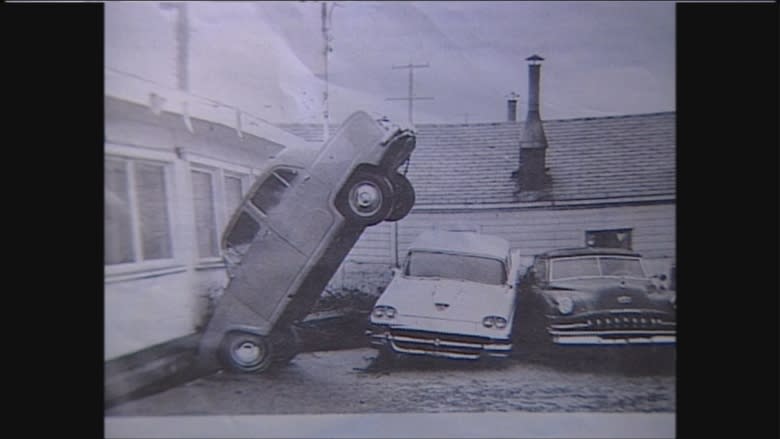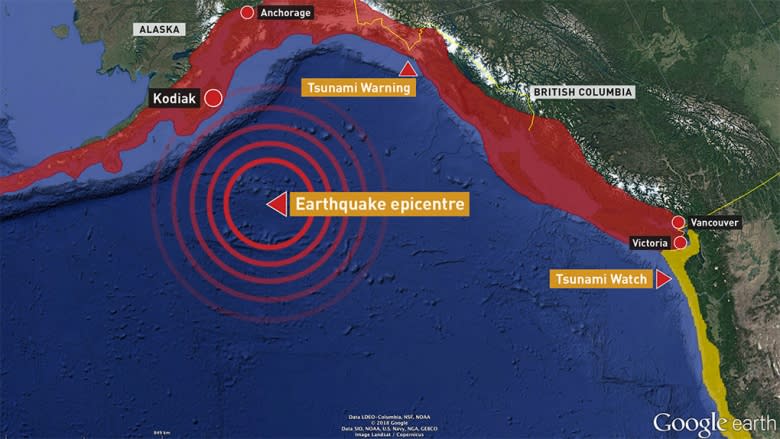Tsunami scare exposes communication breakdown in vulnerable B.C. city
People in Port Alberni, B.C., were first alerted to a threat of a tsunami when warning sirens started sounding in the early morning hours Tuesday.
But anyone looking to the city for more information about the unfolding emergency was out of luck.
None of the three Port Alberni online platforms — Facebook, Twitter, or the city's website — made mention of the tsunami warning or evacuation order as the situation was unfolding, nor did they provided instructions about how citizens should proceed.
The Alberni-Clayquot Regional District (ACRD) Twitter account wasn't much help either, sending out only the most basic information about the situation.
"There are some communications that could have happened a little bit better, particularly getting some information on the city's Facebook page and the city's Twitter account," said Port Alberni Mayor Mike Ruttan.
In 1964, Port Alberni was devastated by a tsunami generated by an earthquake off the coast of Alaska, not far from where today's 7.9-magnitude quake struck.
The waves generated 54 years ago funnelled through the narrow Alberni Inlet, growing ever larger as they moved toward town. By the time they hit, some were as high as three metres and packed enough power to overturn cars and push houses off foundations.
Luckily, nothing like that unfolded today.
However, the event did expose a problem in the region's ability to communicate with its citizens and outsiders in the event of a major emergency.
Ruttan said the issue is two-fold: the person who is supposed to run the city's online accounts is a new hire; and the position for the ACRD's manager of emergency operations has been vacant for more than four months.
"[Emergency messaging] is done in conjunction with the Alberni-Clayquot Regional District," said Ruttan.
"They're the ones who have the EOC — the Emergency Operations Centre. They're the ones who trigger it, and that's done in partnership with the city. At this point there's no one in that particular position."
'Can't predict' a tsunami
Port Alberni city councillor Chris Alemany admits there's an issue.
"We, as a city, didn't have the person in place and the ACRD didn't have that person in place. So I think there's a gap, especially in the social media area right now for emergency messaging.
"But I think it's just sort of one of those things — you can't predict when a tsunami will hit," he said.
Doug Holmes, CEO of the ACRD, said the former emergency operations manager retired in August but that the ACRD "is in the process of defining the best way to fill [the position.]"
'Small tax base'
"The Alberni-Clayquot Regional District is a very small office so each position here is looked at quite carefully because it's a very small tax base," Holmes said. "I've been concerned about this for some time."
The district population is about 30,000, with Port Alberni accounting for about 17,000 of that number.
Alemany believes the city handled the tsunami response well.
"The main thing is that the warning sirens went off and people took them seriously," he said. "I don't think I've ever seen so many cars on the roads at any time in Port Alberni."
According to Ruttan, the city does not have a designated emergency centre, although it did open the Echo Park Recreation Centre. People also evacuated to the Walmart parking lot, he said.
"We had great response and cooperation from the local radio station, the Peak. And the local newspaper, the Alberni Valley News, got information out on all of their platforms," said Ruttan.
"I am pleased with the response for the most part," he said. "As always, there is some learning that happens as a result."



